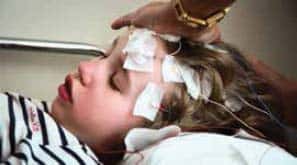The Johannessons consider themselves an ordinary family. They live in an ordinary house on an ordinary street in Reykjavik, Iceland. But inside their home, they are living with what the father, Sigurdur, calls a human time bomb. He’s referring to his 10-year-old daughter, Sunna, who was diagnosed at 14 months with alternating hemiplegia of childhood (AHC), a neurologic disorder that causes episodes of spasms, paralysis, seizures, and excruciating pain.
The family’s journey is chronicled in Human Timebombs, a 40-minute film directed by Agusta Fanney and produced by Sigurdur H. Johannesson, Sunna’s father. The documentary was funded by several entities, including Svolurnar, a charity founded by flight attendants in Iceland. A five-minute version of the film won the Grand Prize and the Fan Favorite award at the American Academy of Neurology’s 2016 Neuro Film Festival.As the Johannessons cope with Sunna’s illness, researchers around the world collaborate to unlock the mysteries of AHC.
The first breakthrough came on January 18, 2012, when scientists at Duke University discovered that a mutation in the gene, ATP1A3, causes the disease. “When we found the gene, we were really excited because that gives a direction for treatment,” says David Goldstein, PhD, a Duke researcher interviewed in the film. Sigurdur hopes the film will raise awareness of AHC and inspire researchers and drug companies to work toward a cure and better treatment. He also hopes the film will find the many children with undiagnosed AHC. “Today, only 850 people are diagnosed, but we know there are thousands of people living with the disease without knowing it is AHC.”
American Academy on Neurology
http://journals.lww.com/neurologynow/Fulltext/2016/12040/Sunna_s_Story__A_powerful_documentary_charts_the.11.aspx


